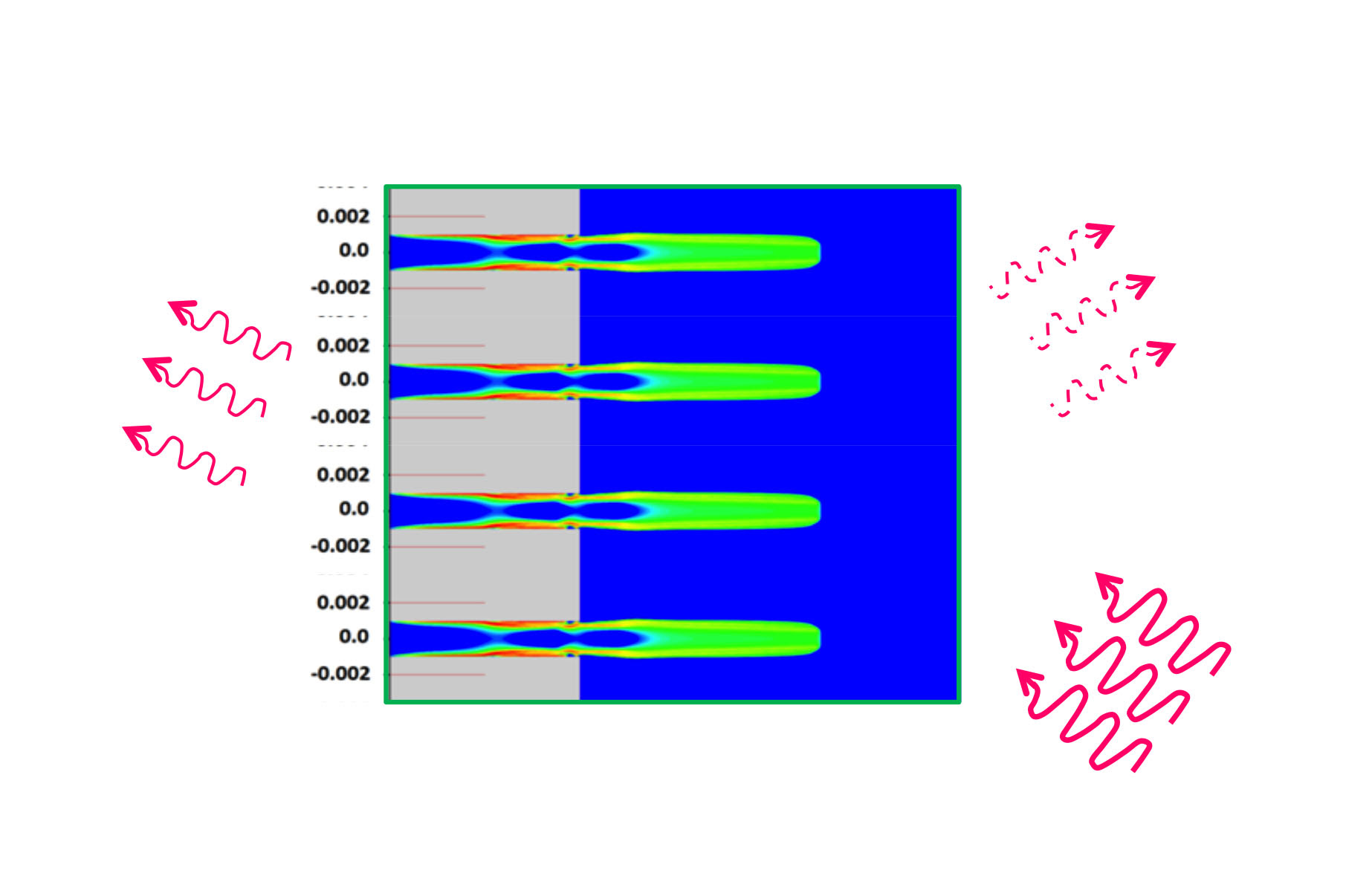- Wednesday, August 27, 2014
- Written by Monica Kortsha
- http://www.ae.utexas.edu/news/features/757-plasma-dod-raja
“Even though it sounds exotic, plasmas are everywhere,” says Dr. Laxminarayan Raja, a plasma expert and researcher at UT’s ASE/EM Department. “Fluorescent lamps, neon signs, plasma TVs, even the sun is a plasma ball.”
Raja is working to expand plasma technology even further by helping design a new class of plasma-based materials that respond to terahertz (THz) waves, a largely untapped region of the electromagnetic spectrum with potential applications in imaging and sensor technology. His research is funded by a $1.4 million five year Multidisciplinary University Research Initiative (MURI)grant from the U.S. Department of Defense and is conducted in partnership with Stanford University, Tufts University, Pennsylvania State University, the University of Washington and the University of California, Los Angeles. The total grant amount between all involved universities is over $7 million.
On the electromagnetic spectrum, THz waves are the midpoint between wavelengths primarily used for industrial purposes, such as microwaves, and those used for imaging purposes, such as infrared. This position endows THz waves with unique properties that are particularly useful for imaging and sensing. However, the position also puts THz waves out of range of typical electromagnetic wave generating, guiding and detecting equipment. This lack of technology even has a name: the “terahertz gap.” 
An illustration of an electromagnetic wave interacting with collimated plasma jets acting as a plasma-based metamaterial. The metamaterial transmits and reflects part of the wave energy and depending on the array geometry and density of individual plasma jets, exotic properties such as a negative index of refraction can be realized.
Raja and colleagues are working to address the gap by creating a new class of metamaterials and photonic crystals with integrated plasma elements that can be turned on and off on demand. When the plasma is on, it selectively interacts with terahertz spectrum of an electromagnetic wave. When it is off, no interaction occurs. These metamaterials and photonic crystals, which are constructed of repeating sub-millimeter sized metals and dielectrics elements, can serve to both produce the plasma while maximizing interactions with THz waves from an electromagnetic source.
It’s a novel application in plasma science, but at a general level, the plasma-containing materials are very similar in structure to the repeating rows of plasma-containing cells that make up a plasma television. However, the plasma Raja and colleagues are studying is significantly different from the kind that produces different colored pixels for a TV. It’s much more energetic – which raises the density of the plasma and prevents a THz wave from simply passing through – and the plasma must be contained in large arrays of the metamaterial or photonic crystal structure, with each element in the array being the size of a THz wavelength (less than one millimeter) or smaller so they can collectively manipulate the wave.
While researchers are working to create a metamaterials environment conducive to plasma/THz interaction, finding out what the interactions are and how they can be usefully harnessed is all part of the research, said Raja.
“The goal is to develop fundamental scientific understanding of all different aspects of these waves interacting with plasma metamaterials and plasma photonic crystals,” Raja said. “This understanding is crucial to the development of practical devices of commercial and military interest in the future.”
Raja’s main research focus at UT has been on realistically modeling plasma behavior in aerospace and related applications, such as using plasma-based thrusters to propel space vehicles. For this new research project, he’s transforming his simulation tools to predict how the plasma-based metamaterials and photonic crystals and THz waves will interact. The modeling is a key aspect of the research, enabling hypothesis and scenarios to be tested computationally to aid in the understanding of laboratory experiments conducted by collaborators.
“We have been developing simulation technology for the computational modeling of plasmas for over 10 years now at UT-Austin and all this experience will be brought to bear on the problem,” Raja said.
The research is just getting started, but by the end of the five year grant Raja says he hopes to have developed predictive simulations that can help guide the development of this new area of research, and lead to more information on how THz waves, an elusive part of the electromagnetic spectrum caught between well known ones, can be manipulated.
“We are certain that in the process of developing these tools we will have really pushed the state of the art in the computational modeling and simulations of this particular phenomena,” Raja said.
For more information on Raja's current research, visit his website.
For more information on Raja's current research, visit his website.

No comments:
Post a Comment
Please share your thoughts. Leave a comment.